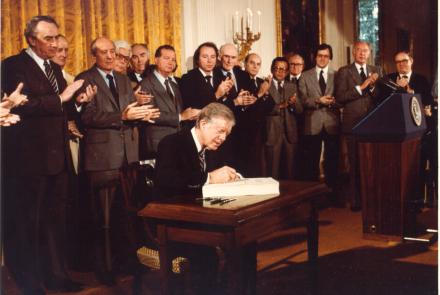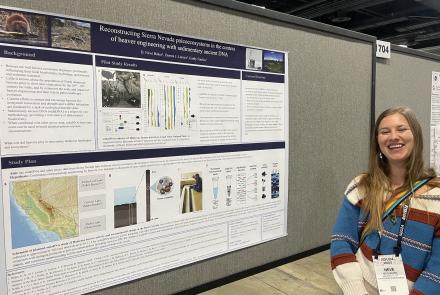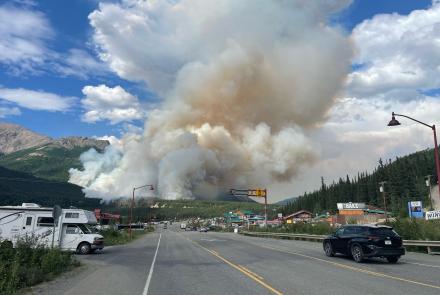

Alaska's all-time cold record turns 40
At the northern fringe of the boreal forest, in a valley silent except for the occasional rumble of a truck on the Dalton Highway, an Alaska milestone came and went on January 23, 2011.
That date was the fortieth anniversary of Alaska’s all-time cold temperature of minus 80 degrees Fahrenheit, recorded by a weather observer at Prospect Creek Camp. The camp was there to house workers building the trans-Alaska pipeline; the weather observer worked for Alyeska Pipeline Service Company, who collected the data for the National Weather Service.
The high temperature at Prospect Creek Camp on Jan. 23, 1971 was minus 64 degrees. The warmest air people in Allakaket felt the next day was minus 66 degrees. January 1971 was also the last time the temperature dipped to minus 60 degrees in Fairbanks (on the 18th), according to Rick Thoman, a weatherman with an archival memory who works at the Fairbanks office of the National Weather Service. He stressed that the temperature never reached 60 below during the January/February cold snap of 1989, remembered by some locals.
“You’ll get flack for this — ‘It was a million below in 1989!’ — but it’s true,” Thoman wrote in an email. The coldest official Fairbanks temperature during the 1989 cold snap was minus 51 on January 30. It was minus 63 in nearby North Pole that day.
Along with the war in Vietnam and the trial of Charles Manson, the record low was front-page news in the Fairbanks Daily News-Miner in January 1971. In “Ice fog clogs Fairbanksans,” reporter Sue Lewis wrote of a new daily low record of minus 55 being set in town on the same day it was 25 degrees colder at Prospect Creek. She also mentioned a four-car pileup due to thick ice fog. An editorial writer accurately described the phenomenon:
“Ice fog is produced when water vapor coming from automobile exhaust, buildings, furnaces and open water from heating plants meets an air mass too cold to dissolve it and cold enough to crystallize it . . . That we have created our tent of poisonous fog is attested by the fact that in 1911 there was no ice fog even at 58 below zero.”
Looking back at climate records, the weather was worthy of news coverage. The average temperature in Fairbanks for January 1971 was minus 31.7 — colder than an average Fairbanks January by 20 degrees. The average daily high temperature was minus 22.7 during the frigid month when Alaska’s all-time low temperature was set.
As impressive as Prospect Creek’s minus 80 seems today (when we in Fairbanks tend to get grumpy at minus 30), Alaska’s record is not North America’s all-time low. The revered mark of minus 81 degrees F was set on Feb. 3, 1947 in Canada, less than 20 miles from Alaska.
Editors at the Fairbanks Daily News-Miner, at that time an afternoon paper, ran a front-page story on that event on the same day it happened:
“Remote Snag Airport in the Yukon had the doubtful distinction of the lowest recorded weather reading,” a reporter wrote. “Official thermometers record only to 80 below, and readers at Snag Airport improvised markings, reporting 82.6 below. The Dominion Weather Bureau ruled this a calculation and set the official mark at 81.”
Alaska has come close to the all-time cold record a few times in recent years. On Jan. 27, 1989, Galena registered at 70 below, McGrath 75 below, and Tanana 76 below. Weather observers Dick and Robin Hammond of Chicken, Alaska recorded minus 72 degrees Fahrenheit during their 8 a.m. thermometer check on Feb. 7, 2008. Two days later, Larry and June Taylor — also official observers for the National Weather Service — recorded the same temperature at O’Brien Creek off the Taylor Highway.







